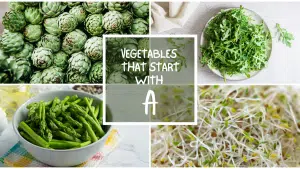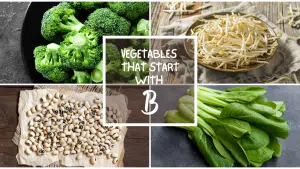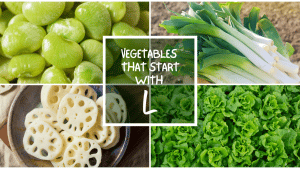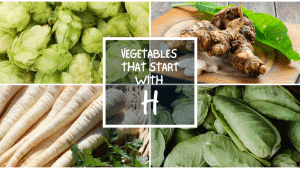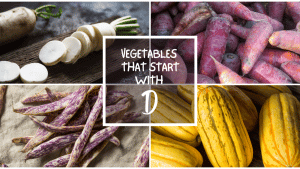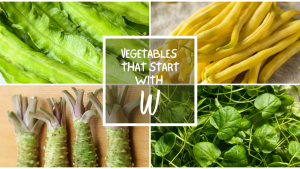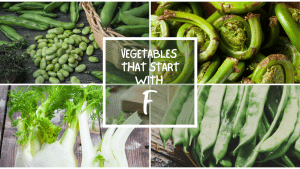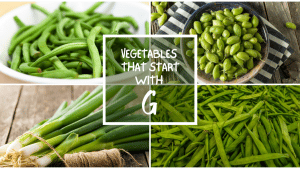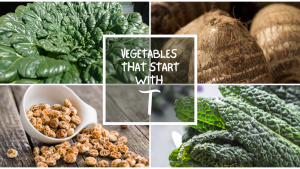All The Vegetables That Start With C
Important Note: When you buy through our links, we may earn a commission. As an Amazon Associate we earn from qualifying purchases. Content, pricing, offers and availability are subject to change at any time - more info.
There are plenty of vegetables in the world, with some being native to some parts and some being genetically modified. Different vegetables have different names based on where they originated from or where they grow. If you decide to explore the different kinds of vegetables, here is a list of all the vegetables that start with C.
- Cabbage
- Carrots
- Cauliflower
- Cassava
- Corn
- Celery
- Cucumber
- Chaya
- Capsicum
- Celeriac
- Chard
- Cardoon
- Common Beans
- The Final Letter
Cabbage

Cabbage is one of the most popular vegetables globally since it is grown and consumed by almost every person worldwide. The scientific name for cabbage is Brassica oleracea var. capitata. Cabbages are believed to have originated from Europe, but the exact location isn’t clear. The cabbage is a leafy vegetable that comes in different colors; this all depends on the variety of the cabbage: the colors are red, white and green. There are different varieties of cabbages, but the most popular ones are choy sum, red cabbage, cannonball cabbage, Savoy cabbage, Napa cabbage and Bok choy cabbage. The cabbage is a biennial vegetable that belongs to the Brassica family and is usually oval or round.
The cabbage comprises hard dark green leaves covering the soft, whiteish or light green inner leaves. Generally, a mature cabbage weighs approximately 500 grams to 1 kilogram, but that doesn’t mean that that’s their weight limit since there have been records of cabbages weighing up to or more than 3 kilograms. Cabbages are grown all over the world, but the major cultivator of the cabbage is China and India. Most cabbages tend to have a neutral smell, but some individuals state that cabbage has a Sulphur smell due to the Sulphur content in the vegetable, and the more you cook it, the more the smell becomes noticeable.
When it comes to taste, it usually varies depending on the preparation method. Cabbage is a versatile vegetable since it can be consumed raw as a salad dressing or cooked though most people prefer it cooked. There are different recipes for preparing cabbage, such as steaming or cooking it with other ingredients.
Cabbage is a good source of magnesium, dietary fiber, calcium, and potassium. It also contains vitamins like thiamine, vitamin C, folate, and niacin. Antioxidants such as zeaxanthin, flavonoids, choline, beta-carotene, and lutein are also found in cabbage. With all the nutritional contents, cabbage offers health benefits such as preventing cancer, diabetes, cataract, high blood pressure, and muscle aches and boosts your heart health, immunity, and digestion.
Carrots

The carrot is a root vegetable that is mostly recognized by its orange color, though with some modifications, there exist some carrots that are purple, white, red, black, and yellow. The scientific name for carrots is Daucus carota. Carrots are believed to have originated from Persia, where it was mainly cultivated for their seeds and leaves though it is native to Europe and southwestern Asia. The root of the carrot is primarily the edible part of the carrot. The carrot is a biennial plant of the umbellifer family, Apiaceae. The carrot’s diameter ranges from 1 centimeter to 8 centimeters, while it can grow to the length of 5 to 50 centimeters though most grow to 25 centimeters. Carrots usually take four months to transition from a seed to a mature carrot though the genetically modified varieties only take 80 days before they are ready for harvest.
For carrots to grow well, they need shad and fertilizer since they require low levels of nitrogen, high levels of potash, and moderate phosphate levels. Carrots usually have a slightly sweet flavor though some may taste bitter; this is up to the growth conditions. Like the other vegetables, carrots have an earth-like smell, especially if they have just recently been harvested, though cooking them can alter the smell. Carrots can be eaten raw, blended to make carrot juice or cooked as a delicacy. There are various ways that you can cook carrots; you can either grill, fry, poach or steam them. Easy recipes involving carrots are honey glazed carrots, carrot fries, easy roasted carrots, and carrot ginger soup.
Carrots are full of nutritional value since they contain vitamin A, B6, K, and various minerals and antioxidants. The health benefits include improved vision and digestive health and reduced risks of cancer, diabetes, high blood pressure and cardiovascular diseases. It also boosts your body’s immunity and bone healing. Since carrots are rich in fiber, huge consumption may lead to bloating and constipation.
Cauliflower

The cauliflower is scientifically referred to as Brassica oleracea in the Brassicaceae family. It is believed that the cauliflower originated from the northeast region of the Mediterranean. Cauliflowers are cultivated worldwide, but China and India are the leading producers worldwide. Only the head is eaten with cauliflowers, and the white edible flesh is mostly referred to as curd. The cauliflower head is composed of a white inflorescence meristem. Cauliflower heads resemble broccoli, and the difference is that with broccoli, the flower buds are the edible portion. Mature cauliflowers usually have clear white and compact needs while ranging from 15 to 20 centimeters wide.
It is highly recommended that once harvested, the cauliflowers have to be cooled. There are four major groups of cauliflower: Italian, consisting of yellow, green, brown, and yellow hybrids, Asian cauliflowers, which are mainly cultivated in China and India, Northwest European biennial consisting of the Angers and Roscoff variety and the Northern European annuals which include the Erfurt and snowball. Cauliflowers also exist in white, orange, green, and purple colors.
Various dishes can be prepared using cauliflowers, such as cauliflower cheese, roasted cauliflower, roasted aloo gobi, and many more. The health benefits of cauliflower include improved digestion since it is rich in fiber. The antioxidants in the cauliflower help prevent cell mutation and reduce free radicals, thereby reducing the chances of you getting cancer. The calcium, potassium, and vitamins help boost your memory, increase bone strength and improve blood circulation. Cauliflowers are one of the most common vegetables in the US; hence they can be found in any grocery store or market.
Cassava

The cassava is a woody shrub belonging to the spurge family, Euphorbiaceae. Cassava is native to South America, and it’s a perennial plant. Cassava is extensively cultivated as an annual crop in tropical and subtropical regions for its edible tuberous and starchy root, a major carbohydrate source. Scientifically cassava is referred to as Manihot esculenta. In the United States and the Caribbean countries, cassava is referred to as yuca. Cassava is a staple food in most developing countries, with Nigeria being the largest producer of cassava and Thailand being the largest exporter of cassava starch. Cassava is also a tuber vegetable since the edible part grows underground.
The edible flesh is enclosed in a rind that is at least 1 millimeter thick and is usually brown. A mature cassava can be at least 5 to 10 centimeters wide and around 15 to 30 centimeters long. The edible flesh is usually chalk-white or yellowish. Cassavas tend to vary in taste since there are sweet cassava and bitter cassava. The bitter cassava is mostly preferred since they deter animals and pests. Cassava can be consumed raw or cooked. There are various ways to cook the cassava; you can either boil or fry them. Also, cassava can be dried and ground to produce flour used for baking purposes. In Brazil, Mozambique, Guyana, Suriname and Panama, cassava is used to prepare a traditional alcoholic beverage. Cassava contains various health benefits, such as it’s a good source of minerals and vitamin C and helping in the digestive process due to its high levels of fiber. Cassava has also been discovered to be a source of biofuel though studies are still ongoing, and the leaves are a great source of proteins.
Corn

Corn is a very popular vegetable with most people, with some referring to it as maize, but its scientific name is Zea mays. Corn is a cereal plant of the grass family (Poaceae), and it’s an edible grain. It is believed that corn originated from America, where it was spread all over the world by explorers. The corn plant is an annual grass, usually with a stout solid and erect stem. The major varieties of corn are yellow and white, but due to advancements in science, we now have pink, spotted, black kernel, and striped varieties of corn. The edible part of the maize plant is usually enclosed in a husk and is popularly referred to as an ear. There are different kinds of corn, such as dent, sweet, pop, flour, and flint corn. Dent corn is mainly grown for food manufacturing and as animal feed. Flint corn is mostly used for decoration, though, in the America, it is eaten as hominy. Sweet corn is mostly sold fresh and canned as a vegetable. Popcorn is mostly grown to be later used to prepare the famous snack with a similar name. Flour corn is mainly grown for the production of flour. From the different kinds of corn, it is evident that corn can be used or eaten in different ways.
The most common ways of preparing corn include roasting, grilling, or boiling. Different regions of the world have different recipes for corn, such as githeri in Kenya, which is a mixture of corn and beans cooked together. In Mexico, cornmeal is treated with lime water, becoming the main ingredient in a tortilla, tamales, pozole, and atole. Also, cornflour is used to make porridge and also baking. Corn offers various health benefits such as improved eye health, preventing diverticular disease, and aiding in the digestion process. These benefits are all due to antioxidants, vitamin C, B, K and E, and minerals such as magnesium and potassium. The US is the largest producer of corn globally, meaning that corn can be found in almost all grocery stores. Corn is also a source of edible oils (corn oil) and animal feed.
Celery

Celery is a marshland plant of the Apiaceae family and is scientifically referred to as Apium graveolens. It has been cultivated as a vegetable since ancient times. Celery is a biennial plant that occurs around the globe. It produces flowers and seeds only during its second year. The flowers are creamy-white, 2 to 3 mm in diameter, while the seeds are broad ovoid to globose, 1 to 2 millimeters long and wide. Celery is mostly grown in areas with soils that are full of nutrients, moist and muddy.
Celery is mostly used as a vegetable, but different regions use different parts. In North America, the leaf stalks are preferred, while in Europe, the root is mostly preferred. The leaves are usually heavily flavored and hence used as a flavoring agent for stews and soup, and sometimes it is dried and used as a herb.
The nutrition contents of celery include antioxidants, vitamin K, folate, vitamin A, potassium, and vitamin C. Hence celery provides health benefits such as stimulating neurogenesis, helping regulate the cholesterol levels in the body, helping reduce blood pressure and inflammation. Celery is a common ingredient in most soups; hence it’s a common item in many grocery stores in the US. Celery is also grown for its seeds which produce essential oils that are mostly used in perfume production and can be mixed with common salts to produce celery salt. Also, it has been known to be blended into juice, which helps with detoxification.
Cucumber

Cucumber is scientifically referred to as Cucumis sativus and is a widely cultivated vine plant belonging to the Cucurbitaceae family. It is believed that the cucumber originated in south Asia, from where it spread to the rest of the world. Cucumbers can be eaten raw, cooked or as a salad. There are three varieties of cucumbers, mainly pickling, seedless, and slicing. From these varieties, plenty of hybrids have been created. The pickling cucumber is cultivated for creating a variety of cucumber-based products, and they usually grow to the length of about 7 to 10 centimeters long and about 3 centimeters wide.
The seedless cucumber is much sweeter than the other cucumber varieties and is regarded as easy to digest, and they tend to grow to a length of about 60 centimeters. The slicing cucumbers are grown to be consumed fresh. The health benefits of cucumber include enabling the body to stay hydrated due to the water. The fiber present helps you avoid constipation. Vitamin K helps maintain stronger bones, and vitamin A present helps with your vision, immune and reproduction systems. The antioxidants such as beta carotene in cucumbers can help fight free radicals and unpaired electrons that damage cells and lead to disease.
Chaya
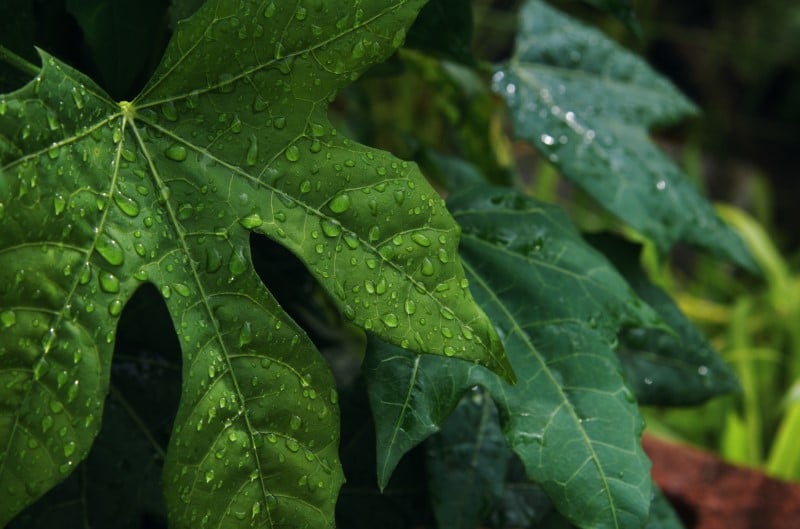
Chaya is commonly known as a spinach tree and scientifically as Cnidoscolus aconitifolius, and it is usually a leafy and fast-growing perennial shrub. The Chaya is believed to have originated from Mexico, and it can grow up to 6 meters high. The leaves have to be cooked before being eaten since they contain a high content of toxic hydrocyanic acid. Chaya needs to be eaten in moderation, and you can only eat up to five leaves a day. To neutralize its toxicity, you need to cook the leaves for about 20 minutes, and you should never use aluminum cookware. Chaya happens to be a very good source of proteins, calcium, iron, vitamin A and antioxidants.
Capsicum
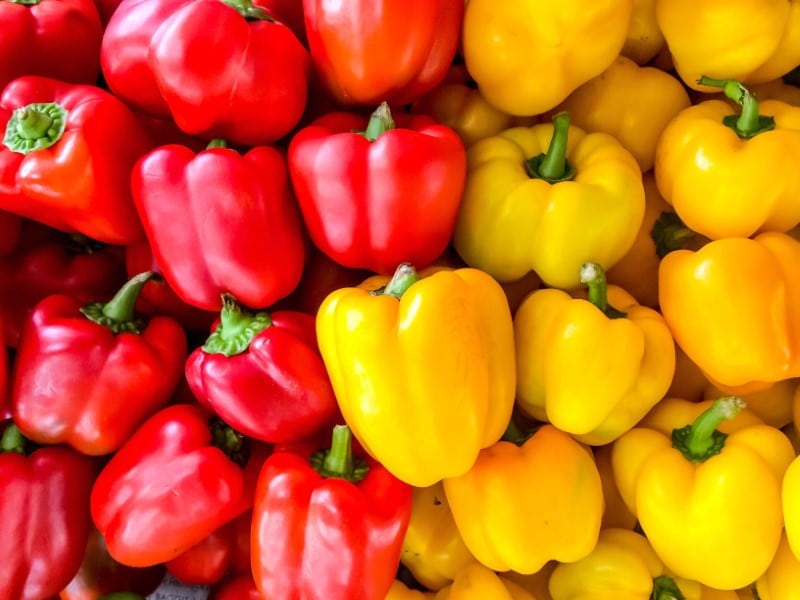
Capsicum is a member of the family Solanaceae, native to the Americas, cultivated worldwide for its chili pepper or bell pepper fruit. The scientific name of the Capsicum is Capsicum annuum. The capsicum plant has various names depending on the type and origin, such as sweet pepper in the US and bell pepper in the North American region, but most begin with the color, such as green ball pepper. In countries such as the UK and Malaysia, it is referred to as pepper, but Australia, Singapore, India and New Zealand have stuck with Capsicum. Capsicum can be eaten raw or cooked. Those used in cooking are of the Capsicum annuum and Capsicum frutescens species. Also, Capsicum is good as stuffing, especially with fillings such as rice, meat, or cheese. Capsicum is a minefield of nutrient that are very beneficial to your health, such as vitamin B6, which help keep your heart healthy, the antioxidants help reduce the chances of you getting cancer, the vitamin C helps prevent arthritis and boosts your immune system, and the compound capsaicin is believed to block the pain transmission to the spinal cord thereby it is effective in treating pain related to herpes zoster and neuralgia.
Celeriac
Celeriac is also known as celery root and scientifically as Apium graveolens var. rapaceum. It is a variety of celery that is mostly cultivated for its edible stem. Celeriac is an unusual root vegetable since it has bulbous hypocotyl with many small roots attached. It is mainly cultivated in northern Europe, North Africa, North America and southwest Asia. When mature, its diameter ranges between 10 to 14 centimeters. Celeriac tends to test almost the same as leaf stalks of celery. Celeriac can be eaten raw, roasted, stewed or blanched. It can also be used as an ingredient when making casseroles and soups. The nutrition contents of celery include vitamin K, folate, vitamin A, potassium, and vitamin C. Hence celery provides health benefits such as helping reduce blood pressure and inflammation, stimulating neurogenesis, and helping regulate the cholesterol levels in the body.
Chard
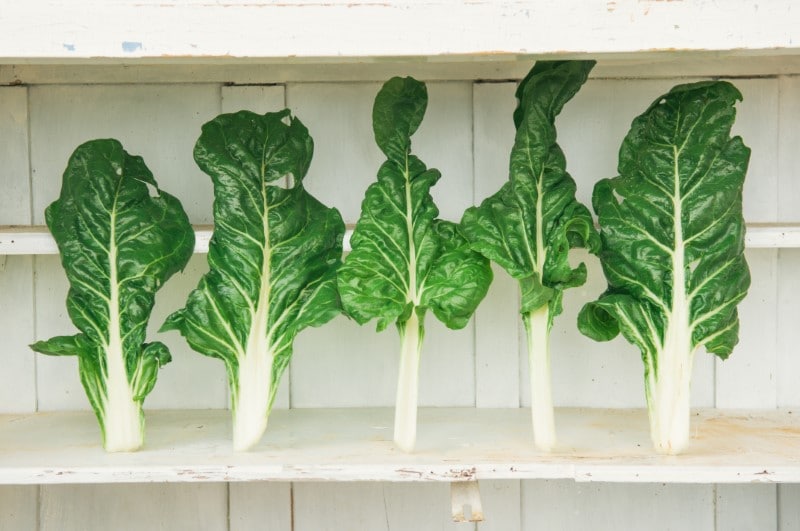
Chard is a green leafy vegetable scientifically referred to as Beta vulgaris. The leaf blade is usually green or reddish in color, while the leaf stalks are usually white, yellow or red. The chard leaves are usually shiny, ribbed and green, with petioles ranging from red to white to yellow, depending on the variety. Chard can also be harvested while the leaves are young and tender or after maturity when they are larger and have slightly tougher stems. Harvesting chard is a continuous process since most species of chard produce more than three crops. When raw chard is extremely perishable, it must be well preserved to last longer. Chard is mostly used raw in stir-fries, soups, omelets and salads. The leaves can be sautéed or boiled. The raw leaves can also be used as wraps for foods like tortillas. Chard is a rich source of vitamins A, K and C, antioxidants and minerals like potassium, magnesium, manganese and iron.
Cardoon

The cardoon is scientifically called Cynara cardunculus, while in some areas, it is called artichoke thistle. The cardoon is native to the western and central Mediterranean region. Cardoons are mainly cultivated in France, Spain, Italy, Switzerland, and North Africa. While the flower buds can be eaten much as small artichokes, the stems are eaten after being braised in cooking oil. Cardoons are used as a vegetarian source of enzymes for cheese production. In Portugal, traditional coagulation of the curd relies entirely on this vegetable rennet. This results in cheeses such as the Serra da Estrela and Nisa. Recently cardoons have been discovered as a source of biofuel.
Common Beans
Common beans are a variety of legume plants mainly grown for their seeds. It is referred to by scientists as Phaseolus vulgaris and is believed to have originated from Latin America. Common beans are grown in almost every part region of the world. There are various varieties of common beans, such as green beans, Anasazi beans, navy beans, black beans, northern beans, pinto beans, kidney beans, French beans and cannellini beans. Some of the bean varieties are primarily grown for their edible immature pods, such as the French and green beans. Even though common beans are grown worldwide, the top producers are China, Myanmar, Tanzania, the United States, India, and Mexico.
Common beans are mostly edible when cooked and are primarily used as a delicacy. Each region of the world has a specific way in which they prepare the beans. Common beans are a rich source of proteins, folate, antioxidants, vitamin B, potassium, and magnesium. These nutrition values of the common bean have various health benefits, such as lowering the risk of cancer and lowering cholesterol levels. Due to their low glycemic index, common beans are regarded as diabetes-friendly.
The Final Letter
It is hard to exhaust all the vegetables that begin with C since they are very many. So, you can take up the challenge and find other vegetables that begin with C to fill up the list. Also, take this as an opportunity to try out new cuisines, especially the vegetables listed in the list above.


